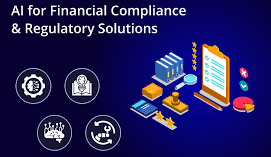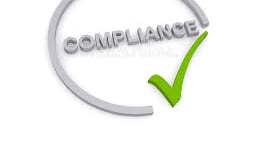Introduction
In the world of finance, data is king—yet it’s also a prime target for cyber threats. From personal banking information to corporate financial records, safeguarding this sensitive data through rigorous compliance checks is vital. Compliance frameworks not only ensure data security but also help prevent fraud and ensure transparency in financial transactions.
Abstract
Overview
Compliance checks in financial systems are designed to ensure that financial data is handled according to regulatory standards. These checks ensure that transactions are secure, data is protected, and financial organizations meet legal requirements to maintain operational integrity and customer trust.
In an increasingly digital world, cybersecurity isn’t just about protecting data—it’s about ensuring everything is properly regulated, tracked, and compliant with industry standards. In this blog, we explore how audit and compliance play a pivotal role in safeguarding your digital assets and ensuring your systems meet security regulations.


[Disclaimer: This blog post is for informational purposes only and should not be construed as legal or financial advice. Organizations should consult with legal counsel and regulatory authorities to ensure compliance with reporting requirements.]
Mandatory
Regulations like PCI-DSS, SOX, and GDPR are mandatory for financial institutions. These regulations enforce strong security measures for data handling, ensuring transparency and protection across financial systems.
Applicability
Regulations like PCI-DSS, SOX, and GDPR are mandatory for financial institutions. These regulations enforce strong security measures for data handling, ensuring transparency and protection across financial systems.
Regulatory or Company Interest?
Regulatory bodies enforce these checks to protect consumers, while financial institutions benefit from avoiding fines, preventing fraud, and maintaining trust.
Key Guidelines
Conduct regular vulnerability assessments (VAPT) to identify and address potential weaknesses.
Ensure encryption of sensitive financial data in transit and at rest.
Implement multifactor authentication for system access.
Regularly conduct audits to ensure compliance with industry standards and internal controls.


Key Implications
Non-compliance can lead to hefty fines, loss of customer trust, and even legal action. It's critical for financial organizations to continuously assess and update their compliance efforts to mitigate these risks.
Countries with Adoption or Influence
Countries like the U.S., with PCI-DSS and SOX, and the EU with GDPR have strong regulations in place to ensure financial data is protected. These regulations influence global practices in the financial sector.
International Frameworks Influenced
Global frameworks such as ISO 27001, PCI-DSS, and GDPR influence the financial sector by providing guidelines for secure data management, transaction transparency, and compliance with privacy laws.
Regional and Industry-Specific Frameworks
Frameworks such as PCI-DSS (payment data security) and SOX (financial reporting) apply specifically to the financial sector. Compliance with these frameworks is essential to maintaining the security and transparency of financial systems.
Secure Your Digital Identity with SecureKnots
Contact us to learn more about our cybersecurity services and ensure your organization meets cybersecurity requirements.


Conclusion
In the financial sector, compliance checks aren’t just a box to tick—they’re a vital line of defense against cyber threats, fraud, and regulatory penalties. By adhering to industry regulations and implementing robust security measures, financial institutions can safeguard sensitive data, maintain transparency, and protect their reputation. At SecureKnots, we offer the tools and expertise to help financial organizations stay compliant, secure, and resilient in the face of evolving threats. Through our audits, VAPT, security training, and simulations, we ensure that your systems are both protected and prepared for whatever comes next. Let’s make sure your financial systems are always one step ahead!
How SecureKnots Can Help
At SecureKnots, we specialize in GRC consulting and internal and external audits to ensure financial institutions comply with necessary regulations like PCI-DSS and GDPR. We also conduct VAPT to identify vulnerabilities and offer security awareness training to staff to prevent human error. Our phishing and ransomware simulations prepare your team for real-world threats, helping your organization stay ahead of the curve. Let us help you ensure your financial systems are both secure and compliant!
This blog focuses on the importance of securing employee access to internal systems while showcasing how SecureKnots can help organizations strengthen their access controls. It is informative and engaging, highlighting the significance of Compliance Checks in Financial Systems Let me know if you need further adjustments!
Thank you for your attention! If you have any inquiries about cybersecurity requirements or need expert guidance, please don't hesitate to contact SecureKnots.
This should wrap up the blog and fulfill the promise made in the previous one!
Compliance Checks in Financial Systems
Financial institutions handle vast amounts of sensitive data, making compliance checks in financial systems crucial. Regulatory standards ensure that financial data is securely handled, stored, and transmitted. These checks help prevent fraud, unauthorized access, and ensure that financial transactions are both secure and transparent.
WITH OUR SHORT BLOGS
STAY UP TO DATE
Copy Rights @ 2023 SecureKnots. All Rights Reserved.
CONTACT US
Contact@Secureknots.com
USA
+1-302-601-2346
+1-302-608-6708
INDIA
080-31658865
GET IN TOUCH
